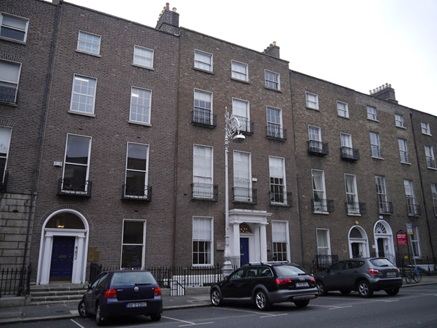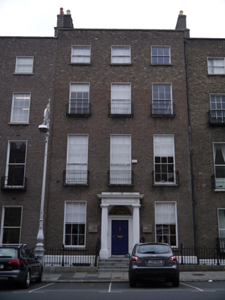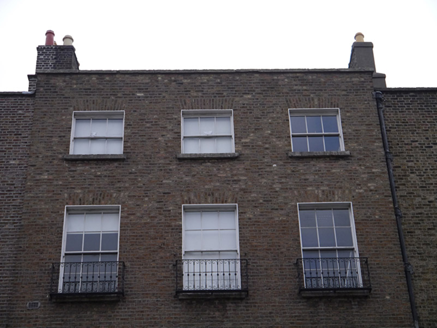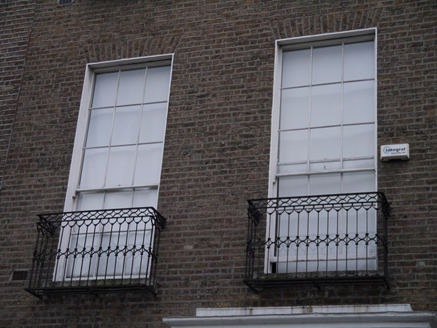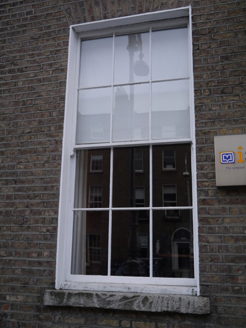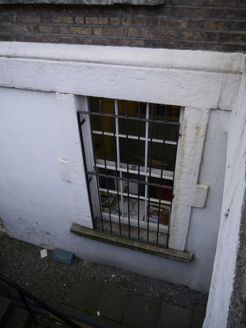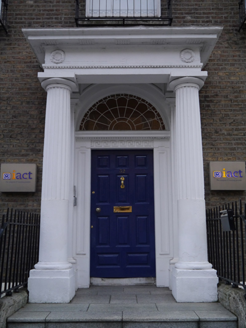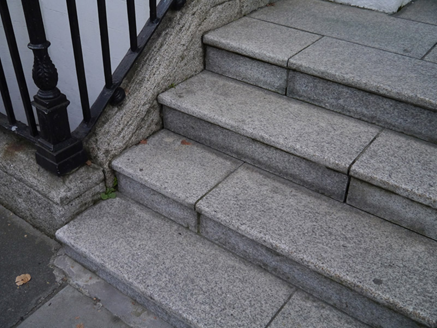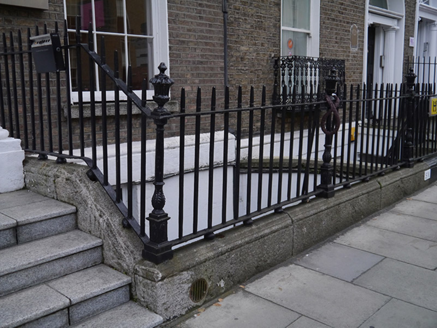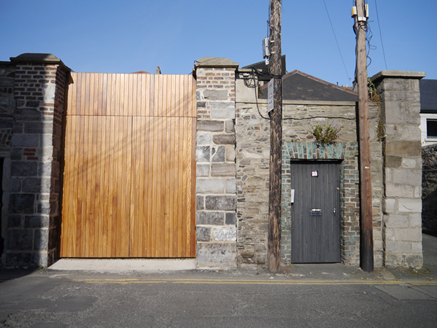Survey Data
Reg No
50930101
Rating
Regional
Categories of Special Interest
Architectural, Artistic
Original Use
House
In Use As
Office
Date
1815 - 1825
Coordinates
316654, 233156
Date Recorded
25/09/2015
Date Updated
--/--/--
Description
Attached three-bay four-storey over basement former townhouse, built c. 1820, with bowed rear (east) elevation, three-storey return to rear and double-pile single-storey hipped roof extensions (c. 1870) to rear plot. Now in use as offices. Pitched roof to west, irregular M-profiled hipped roofs to rear (east) span with copper roof over bowed bay, concealed by brick parapet with masonry coping. Shouldered brick chimneystacks to north party wall with lipped yellow clay pots. Parapet gutters, cast-iron hopper and downpipe to south end. Brown brick walling laid in Flemish bond, ruled-and-lined and rendered walling to basement beneath granite plinth course. Square-headed window openings with brick voussoirs, patent reveals and masonry sills; granite surrounds to basement openings. Replacement timber sliding sash windows with ogee horns; largely six-over-six, three-over-three to third floor and nine-over-six to first floor. Iron balconettes to first and second floor openings, steel grille to basement. Round-headed door flanked by panelled piers rising to moulded cornice and fret-motif to frieze with replacement petal fanlight in moulded architrave over raised-and-field timber panelled door with replacement brass furniture. Door opening framed by prostyle Doric portico comprising columns and engaged half-fluted Doric pilasters on plinth stops, supporting entablature with garland-motifs to frieze and guttae to soffit of cornice. Square-headed door opening to basement with granite surrounds and uPVC door with matching overlight. Granite-paved entrance platform approached by four granite-paved steps flanked by iron railings with decorative cast-iron corner posts on granite plinth, enclosing basement wells to south and north sides. Coal-hole cover to pavement. Street fronted on eastern side of Fitzwilliam Street Upper. Modernised (or replacement) two-storey mews building to rear (east) plot and rubble stone boundary wall on Lad Lane, with squared and coursed stone piers flanking recent vehicular timber gates and square-headed pedestrian door opening with panelled granite architrave, red brick voussoirs and replacement timber door.
Appraisal
This former townhouse stands out in the streetscape, due to its symmetrical three-bay facade, slightly higher parapet level and impressive freestanding Doric doorcase. It retains its traditional form and proportions, mellow brick which contrasts with the granite dressings, well executed ironwork. The development of Fitzwilliam Street Upper began on the north-end of the western side during the early-nineteenth century. Taken as a whole with Fitzwilliam Street Upper and the east-side of the Merrion Square, this uninterrupted stretch constitutes the longest piece of Georgian streetscape in Dublin. Although largely homogenous in character and form, the subtle variations between the houses are indicative of the speculative nature of development.
